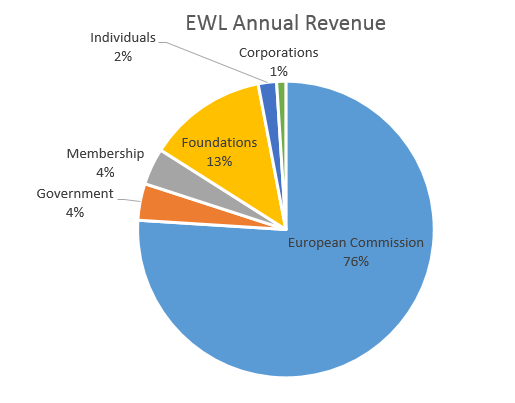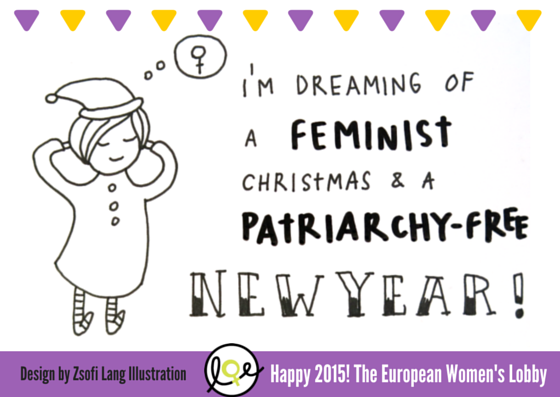Facts and figures about violence against women
- Physical (56%) and psychological (24%) agression are the most frequent in domestic violence.
- 75% victims are female and 25% victims are male.
- From the female victims, only 30% are under 18 years old, in comparison with the male victims, of which 67% are under 18 years old.
- 56% victims are from the urban areas and 44% are from the rural areas.
- The incidence of domestic violence is the highest at 25 – 45 years old (40%) and 0 -18 years old (30%) for female victims and at 0 -18 years old (67%) for male victims.
- 44% victims attended secondary school, 27% victims attended highschool and 21% victims attended primary school.
- 25% victims have a monthly wage under 300 lei, 25% victims have a monthly wage between 300-850 lei and 25% victims have a monthly wage above 850 lei, 25% victims have no income or receive the social benefit.
- 39% family perpetartors are parents, 33% family perpetartors are spouses, 13% family perpetartors are consensual partners, 6% family perpetartors are friends.
- 34% victims are agressed weekly, 21% daily, 18% monthly and rarely agressed 27%.
- NAFP estimated that the real number of the domestic violence cases is higher, taking into account the fact that not all victims come to the responsible institutions or they do not claim the real problem. In the same time not all institutions report the cases of domestic violence to the specialised bodies.
- In 2009 over 12.000 cases of family violence have been registered, representing an increased percent of 8, 04% compared with 2008 and 41,81% regarding 2007. Compared with 2008, number of victims increased with 13,81%. Places in shelters covered only 4,46% from necessary for supporting victims. In 2010, in 8 counties there was no shelter for victims of family violence: Bac?u, Bistri?a – N?s?ud, Bra?ov, C?l?ra?i, Giurgiu, Maramure?, Olt and Suceava.
The main problems that exist for all institutions in providing relevant information related to different types of violence against women are:
- Lack of vision and lack of interest for modernisation of actual form of data collection;
- The way data collection sheets are structured and the way information are introduced and processed is not relevant, neither gender dissagragated. For example, in Romania in the field of fighting violence on women have proposed even since 2000 some interview and data collection forms for recording and processing violence against women, especially domestic violence cases, but these types of forms and recommendations where never taken into consideration more than just in pilot projects and small local schemes of victim protection.
Between 2004-2009, the implementing body regarding data collection was National Agency for Family Protection. NAFP collected and updated a database of domestic violence cases, on the basis of the quarterly reports sent to the NAFP by the county compartments with attribution in the field of domestic violence, within the Directorates of Labor and Social Protection.
Since 2004, the NAFP collected, updated and analysed the database referring to the domestic violence in order to have a real image of the spread and evolution of this phenomenon. In this context, between 2004 and 2008, 47.000 cases of domestic violence have been registered and 677 deaths have been caused by the acts of domestic violence. Out of the total number of victims, 71,34% are women. Out of the total number of men victims, 72% are minors. So, between adults, a vast majority of agressors are men, and victims are women.
Since 2009, according with law provisions 329/2009 regarding re-organisation of some authorities and public institutions, ANPF, Pilot Centre for Assistance and protection of family violence victims and Centre for Information and Consultancy for Family have been disolved and replaced with National Authority for Family Protection and Children Rights.
NGO cooperation
The only non-governmental monitoring mechanism existing in place is formed by a informal coalition of NGOs fighting against violence on women also formalised under a national federation of NGOs active in the field. In this formal structure 16 NGOs are included from across the country, but there are no resources in place for a consistent monitoring of governmental action, in the actual situations in which many NGOs have to close their doors for service provisions, advocacy or campaigns.
Official monitoring mechanism according to Romanian legislation is Social Inspections –but only for service provision, and also a planned Social Observatory, not currently established. Another alliance started from 2007, when Romanian Women’s Lobby was established also as informal network – as an independent umbrella organisation for women’s non-governmental organisations in Romania. ROWL’s aim is to integrate women’s perspectives into all political, economical and social processes, locally as well as internationally. ROWL strive to eliminate all forms of discrimination against women and girls, and to build and strengthen solidarity among women through information, education and awareness rising activities. The Romanian Women’s Lobby was established as formal national association in 2011 and has for the moment 16 member organisations. Oana Baluta is Chair of the ROWL. The Romanian Women’s Lobby is the Romanian coordination of the European Women’s Lobby, the largest umbrella organisation for women’s organisations in the EU.Dina Loghin, boardmember in the ROWL, is vice president in ROWL.
Other NGOs in the country with a focus on violence against women, or supporting actions and advocacy campaigns on this theme are: Centrul de Dezvoltare Curriculara si Studii de Gen: FILIA, Centrul Parteneriat pentru Egalitate,Centrul Romilor pentru Interventie Sociala si Studii- Romani CRISS,Centrul de Mediere si Securitate Comunitara, Fundatia Sanse Egale pentru Femei, Fundatia Pro Women, Fundatia Sensiblu, Grupul Roman pentru Apararea Drepturilor Omului, Asociatia Transcena, Institutul pentru Politici Publice,Asociatia Romana Anti-SIDA, Asociatia pentru Libertate si Egalitate de Gen- A.L.E.G, Asociatia Pas Alternativ, Asociatia pentru Sanse Egale, Asociatia Femeilor Jurnaliste din Romania „ARIADNA”, Policy Center for Roma and Minorities, Asociatia ACCEPT, Societatea de Educatie Contraceptiva si Sexuala, Asociatia pentru Promovarea Femeii din Romania, Societatea Doamnelor Bucovinene, Asociatia FRONT, Agentia de Dezvoltare Comunitara „Impreuna”, Asociatia SEVA, Fundatia Corona, Fundatia Step by Step.
National Legislation
Domestic violence is common in Romania, and the 2004 Reproductive Health Survey Report found that twenty-nine percent of interviewed women stated that a current or ex-partner abused them verbally at least once in their lifetime. Twenty-seven percent of women said that they had been victims of physical abuse, and three percent said that they had been victims of sexual abuse. Although the phenomenon is widespread at all levels of Romanian society, the Government has failed to provide women with appropriate legal and institutional tools to fight against the abuse. Women were found to be the victims seventy-five percent of the time by the National Data Collection. Over 9,300 persons reported being the victim of domestic violence for the year 2007. However, the law on domestic violence is contradictory to the criminal procedure code, and therefore hard to apply as stated in the Country Report on Human Rights Practices in Romania for 2007. The criminal procedure code, for example, does not allow restraining orders to be issued.
As Women 2000 – An Investigation into the Status of Women’s Rights in Central and South-Eastern Europe and the Newly Independent States (hereafter Women-2000) stresses, it is the state’s failure to address the issue of domestic violence that “illustrates indifference towards the victims and perpetuates a discriminatory attitude regarding women’s status in the family.” In the period 2004-2009 53 shelters for victims of domestic violence in Romania were established and 37 counseling centers for the victims.
Before 2002, there was no specific legislative provision regarding domestic violence. According to Women-2000, in November 2002, the Parliament adopted a new Criminal provision which stipulates harsher punishment for bodily injuries when the victim is a member of the family (Article 180). According to this provision, “injuries or any other violent actions which cause physical pain are subject to imprisonment between one month and three months or with fine.” If the same actions are committed against a family member, the penalty increases to a period of six months to one year or a fine. If serious injuries result, the imprisonment may be increased up to two years. In situations where the violence does not involve a family member, criminal proceedings initiate regardless of whether the victim files a complaint. In all other situations, prosecution begins upon complaint by the injured party. Reconciliation between the parties negates criminal responsibility, even when the criminal action has been initiated by the prosecutor.
In addition to the criminal law amendments, a new law targeting the prevention and the punishment of domestic violence was adopted in Romania in May 2003 and is known as Law 217 Romanian Domestic Violence Law. The new law defines domestic violence as “any physical or verbal action deliberately perpetrated by a family member against another member of the same family, resulting in physical, psychological, sexual suffering or material loss” (Article 2(1)). Domestic violence also includes encroachments on women’s fundamental rights and freedom. The new law addresses the role of social workers, prevention measures, mediation, shelters, protection measures and sanctions. The National Agency for Family Protection was charged with implementing protective strategies, training, funding, educating, creating shelters and hotlines, collecting data and setting up rehabilitation centers for both victims and perpetrators.
Romania launched a National Campaign 2006-2008 in accordance with the Council of Europe Campaign to Combat Violence Against Women. This involved the action of local and regional authorities, the Romanian Parliament, and other governmental structures. Messages such as ” Violence against women represents a serious human rights violation” were disseminated by TV and radio.
In 2005, a new National Strategy was adopted under Governmental Decision 686 (2005) which outlines ways to prevent and combat domestic violence. There is currently another draft proposal of a plan for 2008-2013 to further prevent and combat domestic violence.
The modification of law 217/2003 have been very recently voted in Romanian Parliament on February 29th 2012. The most important modifications are those related to introduction of victim protection order and restraining order for agressor, as well as more budgets allocated for shelters dedicated to victims. Protection order and restraining order represent novelties for Romania.
Regarding restraining order the modifications of law includes eviction of agressor from common house with the victim, with a minimum distance of 200 meters of victim, home and working place, as well as interdiction for contacting victim through phone, corespondence or any other means of communication, as well as being forced to follow a psychological counselling program.
Victims of family violence will be able to adress to the Court for obtaining a protection order with temporary provisions, moment from which Court will be able to forbid to agressor to stay or come back in common house or to dispose temporary eviction of him, to dispose the agressor to pay certain costs which are supported by victim, as medical costs, Court expenses, expenses generated by shelter and assistance given to victim, as well as measures regarding custody of minor children, support for family and other social services.
Another major modification is those regarding establishing at local level (General Directions of Social Assistance and Child Protection) of specilised teams in th field of prevention and combating family violence. Inside these will be part police representatives, public health, NGOs, probation services, forensic medicine and other institutions.
Contact
ALBU Laura, Executive president, Community Safety and Mediation Centre
Email: lalbu@cmsc.ro; aliaconsult2@yahoo.com; Tel. +40 232 252920; fax +40 232 252926; Zeb: www.cmsc.ro; Address: 32, Pantelimon street, 5th floor, Iasi, Iasi county, 700082, Romania


